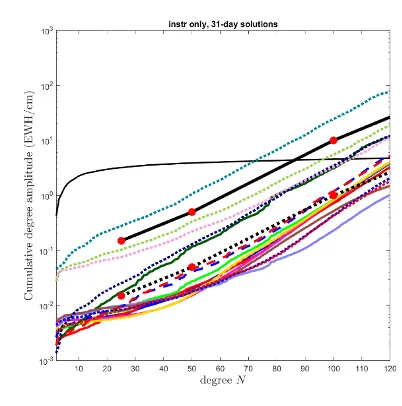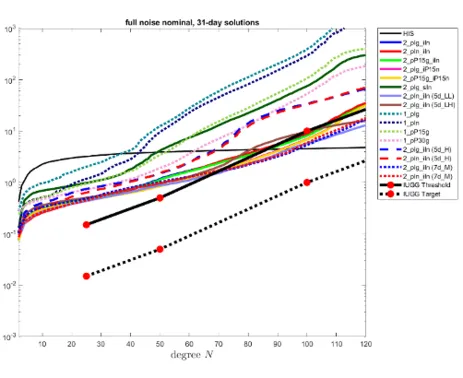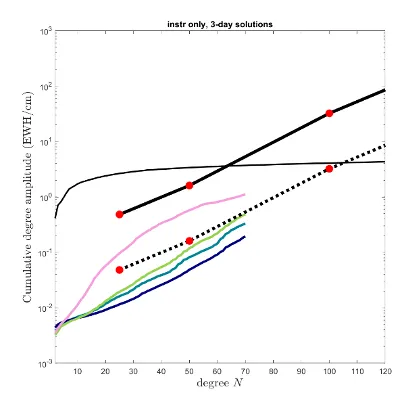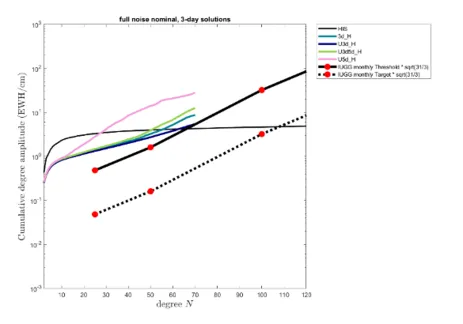Match of simulation results against MRD requirements
Figure 1a shows the cumulative EWH errors of various scenarios in the product-only noise case for a monthly (31 day) retrieval period. Evidently, in the absence of background model errors and related temporal aliasing the results come very close to fulfil even the very ambitious target requirements
Figure 1b shows the same quantities for the full-noise scenarios. Here, the threshold requirements can largely be reached, with the exception of the low degrees. This significant reduction of performance for the full-noise case compared to the product-only noise case again demonstrates the dominant role of background model errors in the total error budget. However, it should be emphasized that the simulations are based on very conservative assumptions of the background model errors. Additionally, the cumulative error curves are based on the raw solutions, i.e. without any a-posteriori filtering, while the IUGG requirements assumed some degree of post-processing. It is expected that in the near future, the overall performance of the mission, which is currently not limited by the key payload and system design, will be improved by improvements of geophysical background models, going hand in hand with further improvements in processing methodology to reduce the impact of temporal aliasing.
Also, the match for sub-monthly periods was analyzed. As an example, Figure 8 visualizes cumulative errors of simulations using a 3-day retrieval period (up to SH degree 100). The monthly MRD threshold and target requirements were scaled to a 3-day period (cf. 1f) by multiplying with a factor of sqrt(31/3). Similar conclusions as for the monthly retrieval period also hold for the sub-monthly period.



